Cloud storage is great but you can never beat physical storage for practicality and reliability. Having huge amounts of storage in a pocketable drive is really handy and for some users might be absolutely necessary.
There are plenty of portable hard disk drives (HDD) as well as much-faster solid-state drives (SSD) to choose from and we’ve reviewed and ranked some of the best ones. We are focussing on SSDs here but drives like the WD Black P10 get an honourable mention.
Portable USB drives are powered by the connected computer, so you can use them on the move without the need to plug into the mains or use batteries. Some will even connect your phone or tablet and let you extend storage that way, or allow you to transfer or open files.
Find our full chart below and click through to the full reviews if you want to read more about a particular drive. Looking for an internal SATA or NVMe drive? Check out our best SSD chart.
Best portable hard drives & SSDs 2022
Adata SE760 – Best Overall
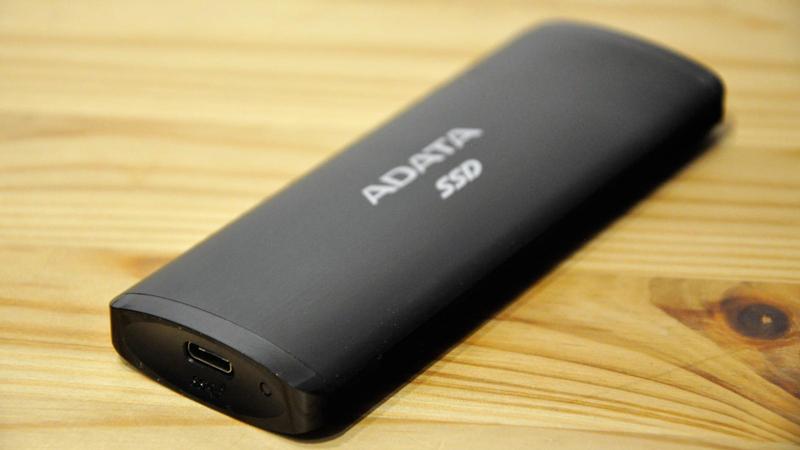
- Pros
- Cheap
- Great performance
- Type-A & Type-C cables
- Cons
SSD, Average Read/Write speed: 934MB/s
Adata has come up with an excellent rival to the Crucial X8 and importantly done so at a cheaper price.
Like the X8 there are no features like a rugged design or encryption but there are alternative options if you need those things.
Instead, the SE760 provides a hassle-free way of carrying around a large amount of speedy storage without breaking the bank. It even comes with Type-C and Type-A USB cables included.
Read our full Adata SE760 review
Kingston XS2000 – Best Performance
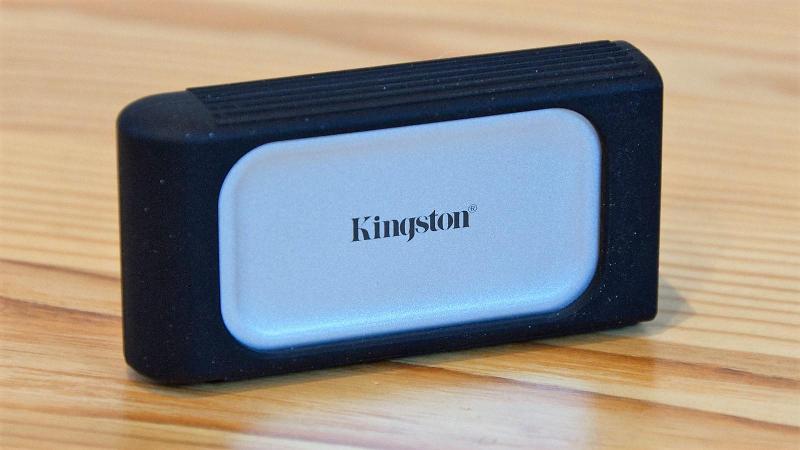
- Pros
- Reasonably priced
- Headline performance
- Small and lightweight
- Cons
- Needs USB 3.2 Gen 2×2 for full speed
- Limited SLC cache size
- No USB Type-A adapter
SSD, Average Read/Write speed: 1986MB/s
If you want the top performance then the XS2000 is aptly named as it offers headline speeds with read peaking at 2092MB/s, though you will need a USB 3.2 Gen 2×2 to access this level of performance.
That’s around double many rivals if you do and the price here is surprisingly affordable, plus this is a very portable drive.
On the downside, the limited cache means you won’t get sustained performance for larger files and Kingston doesn’t provide a USB adapter to use the XS2000 with older Type-A ports.
Read our full Kingston XS2000 review
Seagate One Touch (2021) – Best Backup Software
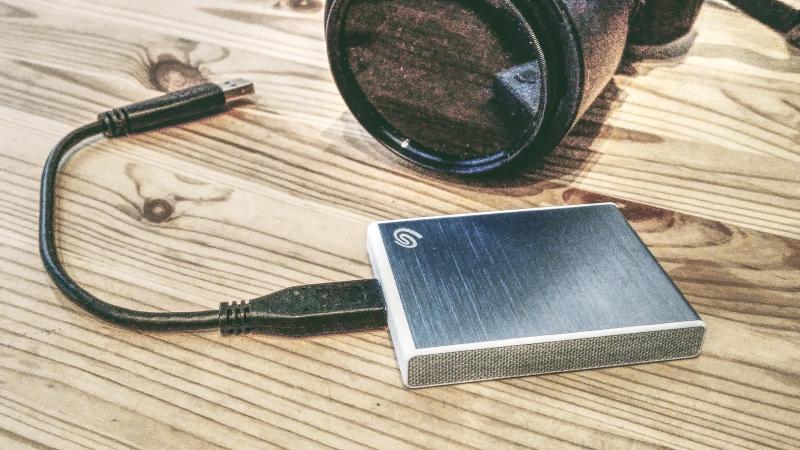
- Pros
- High performance
- Up to 2TB
- Free Sync Plus software
- Cons
- Short cables
- Could be more robust
SSD, Average Read/Write speed: 1,007MB/s
As long as you don’t need hardware encryption then the latest version of the One Touch SSD is an excellent choice.
Plug it into the right USB port and you’ll get double the speed of the previous version, matching many rivals. Capacity goes up to 2TB and Seagate provides useful and free, Sync Plus software to make backing up files easy.
It’s also highly portable and although it’s not as rugged as some alternatives, it’s hardly fragile. The main pain point here is the ridiculously short cables, but that’s not uncommon either.
Read our full Seagate One Touch SSD (2021) review
CalDigit Tuff nano – Best Speed and Durability Combo
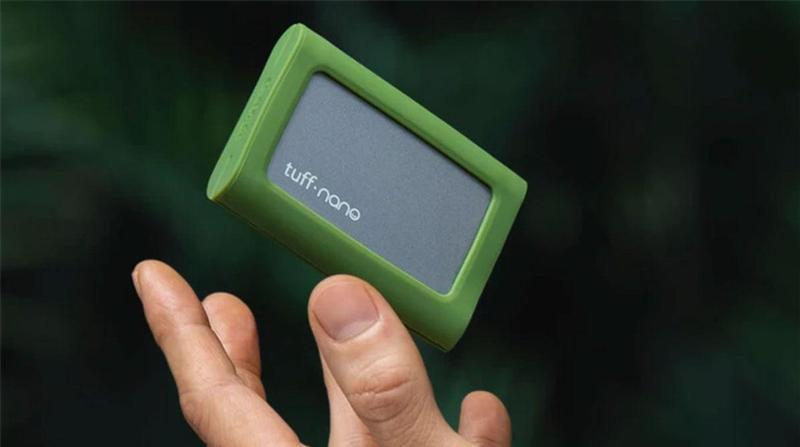
- Pros
- Super fast
- Super tough
- Super small
- Cons
SSD, Average Read/Write speed: 891MB/s
The CalDigit Tuff nano blew us away with its super-fast speeds, which are twice as fast as comparable portable SSDs. using NVMe technology, the 512GB drive we tested achieved Read and Write speeds close to 1,000MB/s!
It’s also robust, being IP67 certified – meaning that it can be immersed in water and is dust-tight. It can also withstand drops up to 3M.
It is compatible with most computers (it comes with USB-C and USB-A cables), and, being USB-C, can also work with Apple’s iPad Pro.
While it might be a little pricy for the casual user, professionals such as photographers and filmmakers will appreciate its blistering speed and tough travel credentials.
Read our full Caldigit Tuff nano SSD Drive review
Crucial X8 – Excellent Performance
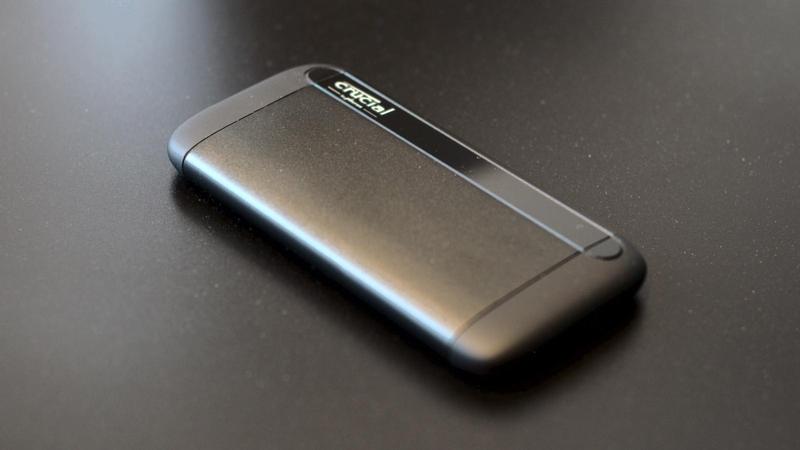
- Pros
- Top performance
- Affordable
- Cons
SSD, Average Read/Write speed: 1,015MB/s
The Crucial X8 is a great option for those looking for reliable portable SSD.
It’s well-made, compact and offers excellent speeds via USB 3.2 Gen 2 and offers great value for money, too.
There might not be any encryption but for many users, this won’t be an issue. If it is, then there are plenty of other options such as the Samsung T7 Touch and SanDisk Extreme.
Read our full Crucial X8 review
Adata SD600Q – Best Value
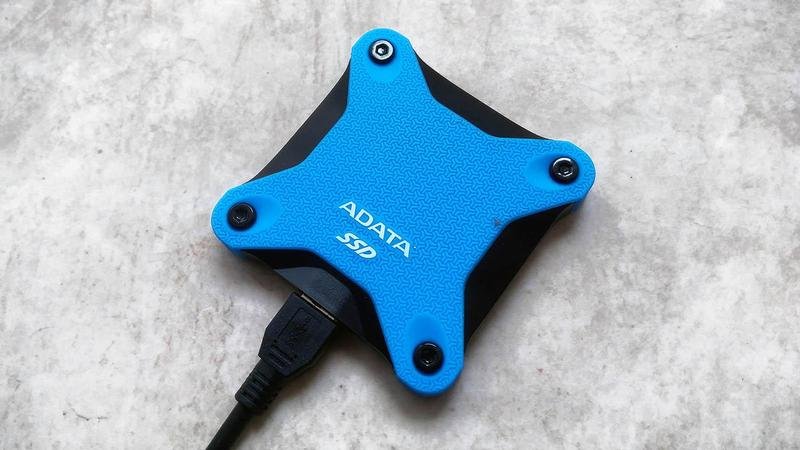
- Pros
- Highly portable
- Durable casing
- Cheap
- Cons
- USB-A cable
- No 2TB option
SSD, Average Read/Write speed: 417MB/s
It might forego the modern USB-C standard for connectivity but the Adata SD600Q is a great drive for anyone looking for a portable SSD and doesn’t have a hugely demanding set of tasks for it.
The SD600Q provides a great combination of things including the robust and compact design, along with affordable prices – if you don’t need more than 1TB.
It’s also quick enough to copy files without having to wait for ages and you can also make use of Adata’s free software if you like.
Read our full Adata SD600Q review
Samsung T7 Touch – Best Encryption
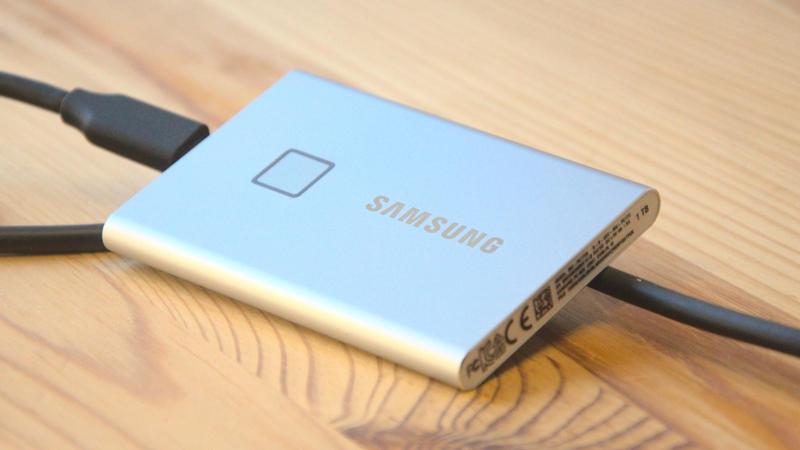
- Pros
- Excellent speeds
- Fingerprint scanner
- Compact
- Cons
SSD, Average Read/Write speed: 929MB/s
Samsung has improved on the popular T5 with a portable SSD that’s both faster and is more secure.
The fingerprint scanner works well but the drive is lacking in a simple way to reset it should you not have the registered finger so just be careful. You’ll also need to be using the right port to get the most out of the T7’s potential speed.
Those are just caveats for an excellent drive which has a lot to like. If you won’t make use of these new features then you may as well grab the cheaper T5.
Read our full Samsung T7 Touch review
SanDisk Extreme Portable SDD V2 – Most Portable
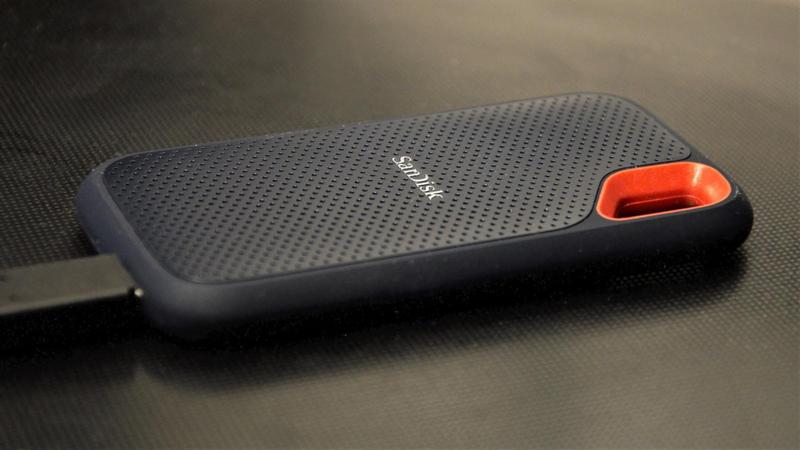
- Pros
- Faster than SATA SSDs
- USB-A + USB-C
- Lightweight
- Cons
SSD, Average Read/Write speed: 930MB/s
SanDisk has done a great job of improving its rugged portable SSD with this new model, although the naming is a little too similar with just ‘V2’ at the end which isn’t even on the box.
If you make sure you’re buying this new model, you’ll benefit from double the speed as well as built-in encryption. The Extreme Portable is also one of the lightest drives we’ve ever seen if that’s important and also has an IP55 water and dust rating.
The drive offers both USB-A and USB-C, just note that you’ll need a USB 3.2 Gen 2 port on the device you plug this SSD into to benefit from the fastest speeds.
Read our full SanDisk Extreme Portable SDD V2 review
WD Black D10 – Best Gaming Storage
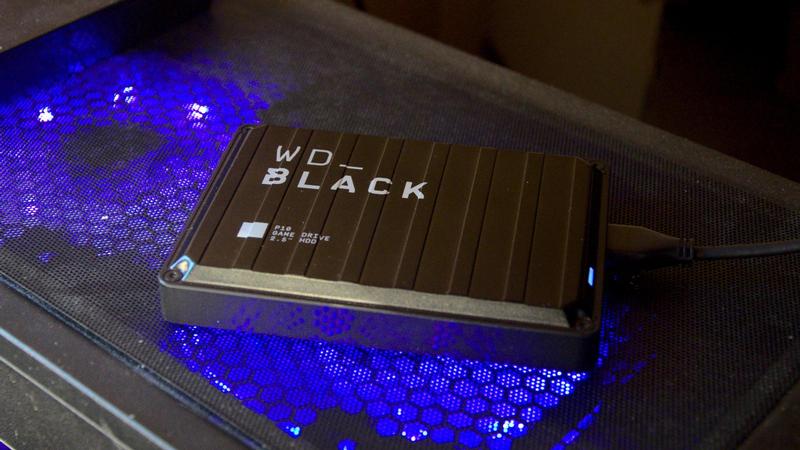
- Pros
- Lightweight
- Reasonably fast
- Military styling
- Cons
- Short USB cable
- Can’t run all console titles
- Expensive
SSD, Average Read/Write speed: 625MB/s
If you’re lacking in space for your console or PC games then the WD Black D30 is a decent option to gain a lot of storage in a small and stylish package.
The metal container style shell is really the only gaming element of this drive, but it is highly portable and ready to use out the box. You’ll get decent speeds from the USB 3.2 standard.
As usual, we’d like the cable to be longer. If you need more space than 2TB and can cope with slower speeds, the Black P10 goes to 5TB.
Read our full WD Black P10 Game Drive review
Lexar SL200 – Up to 2TB
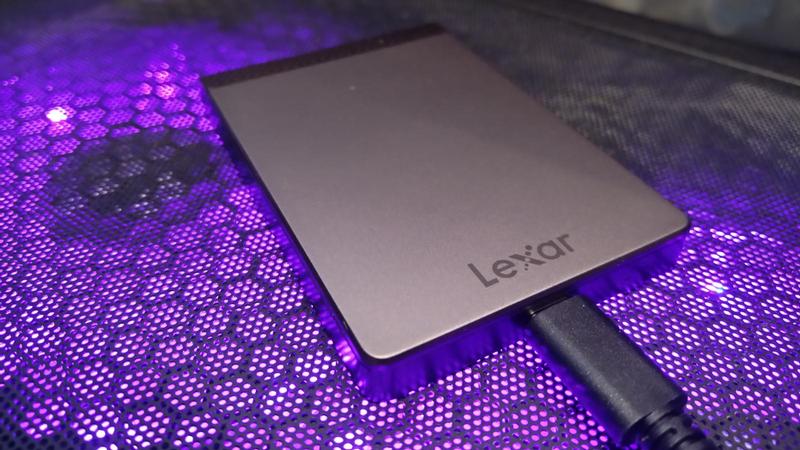
- Pros
- Affordable
- Long Type-A and Type-C cables
- Hardware encryption
- Cons
- Lacks NVMe level performance
- Needs a carry pouch
SSD, Average Read/Write speed: 545MB/s
You can get drives with twice the speed at the same price, but if you don’t have NVMe storage in the system your plugging into or a USB 3.2 Gen 2 port that won’t matter.
The Lexar SL200 does, however, offer encryption which many other drives don’t. So if security is more important than speed then this could be a great investment.
It’s fairly plain looking but that doesn’t matter as much as the longer than average cables and the fact this comes in up to 2TB of capacity if you need lots of space.
Read our full Lexar SL200 review
How to choose a hard drive or SSD
Even in the smallest portable drives you’ll likely find are 128GB in size, which is enough to space thousands of CD albums in lossless FLAC format, or even more in lower quality MP3 or AAC formats. Off-loading your music collection alone from a computer to a portable drive can be a godsend in freeing valuable space if your laptop has limited storage.
Another popular application of portable storage is for keeping critical backups of your data held on a PC or laptop. You may be able to keep a perfect clone of your entire computer’s internal drive, on standby and ready in the event that the computer is lost or its drive should malfunction.
Alternatively, you may choose just to back up the most important files and documents from your user libraries, such as text documents, photos, films, music and stored email. Some portable drives include software that can help automate this process, keeping your selected directories in sync whenever you plug in the drive or by a daily schedule.
Performance
Now that USB 2.0 has been banished from all self-respecting storage, we find USB 3 as the standard for connection, letting these portable drives perform as quickly as the little disks inside will allow.
This means that when transferring your music or video collection to or from your PC to an HDD, you can expect around 100MB/s read speed (and typically the same for writing, since unlike flash storage technology the read and write speeds tend to be more symmetrical).
Compare this with the older drives using USB 2.0, which would limit speeds to around 35MB/s, or only one-third the speed. So in real terms, your 100GB of media files would take close to an hour to transfer with USB 2.0, or under 20 minutes using USB 3.0.
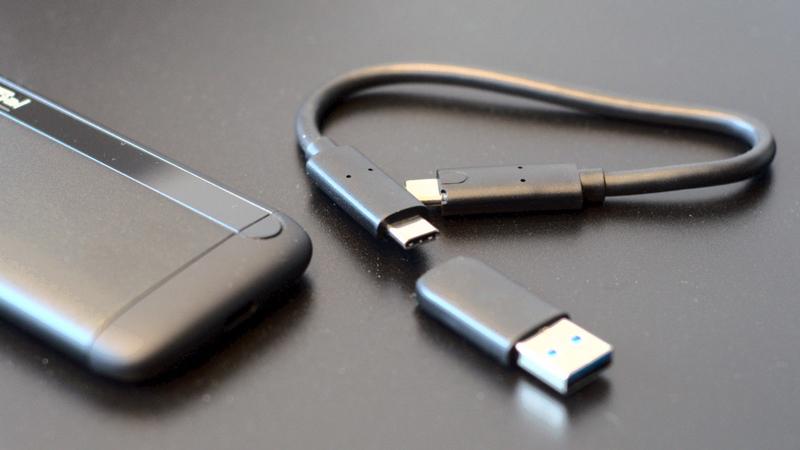
If you’re likely to be storing or backing up many small files, be aware that overall performance will plummet since hard disks tend to choke on smaller files. So while large files may zip across at 100MB/s, the smallest will likely travel at less than 1MB/s, or one hundredth that speed.
USB 3 is confusing, as USB 3.0 was retrospectively renamed to USB 3.1 Gen 1. There’s also a newer version, USB 3.1 Gen 2. This doubles the potential throughput from Gen 1’s 5Gb/s to 10Gb/s. In megabytes per second, these equate to 625 and 1,250 respectively. Pretty fast, then.
In reality, most SSDs top out at around 1000MB/s (although we have seen faster), and this speed is highly dependent on the device you’re connecting it to so don’t automatically blame the drive if you experience slower speeds. Note that USB-C Gen 2 won’t go any faster when USB 4.0 arrives.
Check out the average speeds in the summaries above, and go to the full review for more detailed speed-test results.
Protection
A rugged exterior will be handy if you want the freedom of being able to throw around the unplugged drive with less worry that it will damage the unit, and more importantly, lose your data.
Look out for shock-resistance ratings such as the US military MIL-STD-810F 516.5 (Transit Drop Test). This means that it should withstand being dropped 26 times onto a hard floor, once on to each face, edge and corner, from a height of 1.22m.
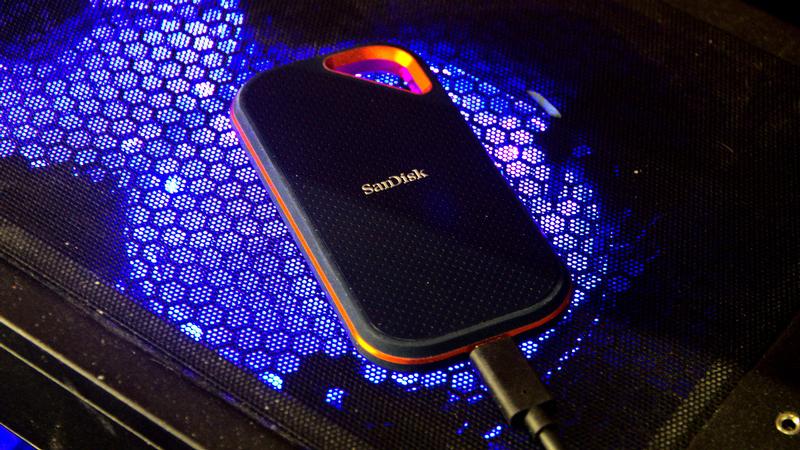
Flash storage – more commonly known as SSDs – can survive more brutal treatment, and some portable drives are even water-resistant. If you were to accidentally drop a portable SSD drive in water, then as long as the port covers are firmly closed, it will work fine to use it after it has been fully dried.
Some drives have an IP waterproof rating like phones.
Reliability
It’s tough to say definitively which manufacturer makes the most reliable hard drives. While there’s a big difference between the technology used in traditional hard drives and SSDs, both have a limited lifespan, and this is why warranties are relatively short – typically two or three years.
What’s important is that you have a well-thought-out backup process and you don’t rely on any single drive to store precious files. Ideally, you should have three copies: one on a PC, phone or tablet, one on a backup drive and one in the cloud.
Value
For many users, a portable storage drive may be an unavoidable commodity, and price will be the deciding factor.
Often an older drive will be cheaper thanks to a drop in price so you might get a…
